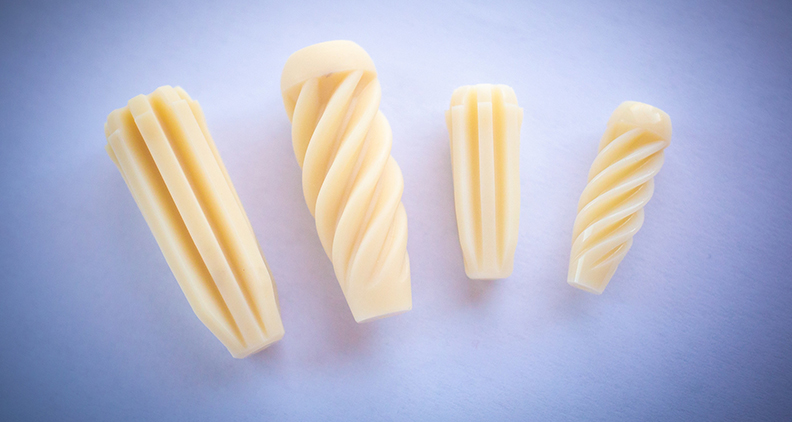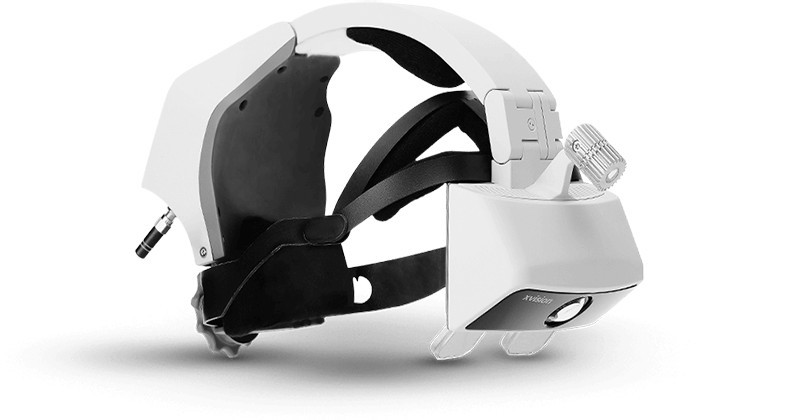
Young biomaterials companies bring fresh ideas to address unmet clinical needs. Succeeding where others have not means the chance to seize market opportunity. In a recent OMTEC® webinar, How Companies are Developing Next-Generation Biomaterials for Orthopedics, three R&D executives from startups spoke about their new materials technologies and lessons in commercialization. While the materials differ considerably, each company faces similar challenges in discovery and development and the path to regulatory clearance. We recap a portion of their advice.
Remember that Molecules may Play Multiple Roles
Acuitive Technologies’ CITREGEN is a platform biomaterial with a modular design that can be modified for a wide variety of applications, including foot and ankle, shoulders, spine and more. It’s a thermoset bioresorbable elastomer which makes it different from the traditional thermoplastics. An elastic nature allows resorption without chronic inflammation or acid dumping. CITREGEN is designed to be functional and bioactive to instruct tissue regeneration.
CITREGEN is based on the citrate molecule, which is traditionally known to play a vital role in cell energy production. While it’s often used to prevent and treat kidney issues, Acuitive Technologies’ Director of R&D Richard Tran, Ph.D., said there’s actually 400 times more citrate in bone and teeth than soft tissues and bone plasma.
“Researchers have known that citrate levels were high in bone for a while, but now we’re learning about the role of citrate in bone physiology,” he said.
Citrate offers many material and biological benefits in orthopedic biomaterials. Tran said its most important advantage is its ability to maintain bulk chemistry. The citrate molecule is multifunctional and allows building a pendant chemistry into the bulk of the material, not just modifying the surface. This means that any molecules that attach to the citrate will be present throughout the material’s entire lifecycle.
Acuitive Technologies received its first FDA 510(k) in 2020.
Use a Master File to Ease the Regulatory Process
DiFusion Technologies’ ZFUZE harnesses the relationship between osteoimmunology and bone response of orthopedic biomaterials. It’s a composite polymer derived from PEEK and negatively-charged ceramic aluminum silicate molecules. ZFUZE interacts with the human immune system so that it does not attack it as a foreign body. DiFusion sees applications in spine and other areas.
Sriram Sankar, Director of R&D at DiFusion, says that using a master file has helped smoothed his company’s submission process.
“When you’re developing a platform biomaterial or a biomaterial with manifold applications, it’s very important to consider a master file,” he said. “These are generally developed by biomaterials manufacturers who give the medical device manufacturer an access letter that the FDA uses to review relevant sections of the master file with respect to the material. Oftentimes with young companies, like us, who have a leg in both boats, a master file can help development from the get-go, because the FDA is able to review all of your confidential information.”
Sankar said that having a master file is also helpful for ongoing 510(k) and BLA submissions.
“The existence of a current, up-to-date repository in the form of a master file gives reviewers quick access to evaluate different sections,” he said. “It makes the applications less cumbersome, which reviewers appreciate.”
DiFusion received its first FDA 510(k) clearance in 2019.
Consider Patient Needs to Find Opportunity
HYALEX is a synthetic cartilage designed to mimic the form and function of native hyaline cartilage. It has the potential to be applied to products in any articulating joint in the body.
Cartilage injury and osteoarthritis are the leading causes of joint replacements today. Currently, U.S. patients with cartilage lesions have limited options for surgical cartilage repair. Mary Beth Schmidt, Ph.D., Vice President of R&D at HYALEX Orthopedics, noted that biologic repairs are not suitable for every patient depending on weight, age, or activity levels. She said that other companies have pursued the regenerative cartilage space with synthetic materials, but those competitors have used traditional orthopedic materials. HYALEX is building a material to act like cartilage with repair properties.
She said that HYALEX might allow treating more patients who may not have been eligible for other types of repair, addressing an unmet clinical need in orthopedics.
“Compared to the surgical cartilage repair and replacement options available to patients today, a synthetic cartilage implant may allow treatment for a broader range of patients, including those who might not be ideal candidates for biologic treatments,” she said. “I look forward to the opportunity to help bring this new approach to treating cartilage lesions to patients across a wide variety of application areas and helping those patients be active and stay active.”
HYALEX received FDA Breakthrough Device Designation in 2021.
The development of new materials is considered an essential and innovative step for the future of orthopedics. You can learn more about these materials and the journeys these companies have taken in their hour-long conversation.




